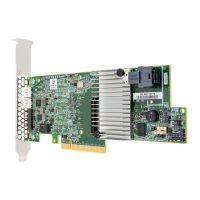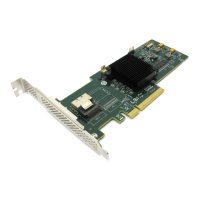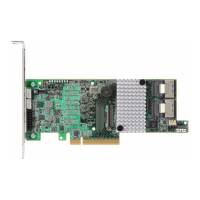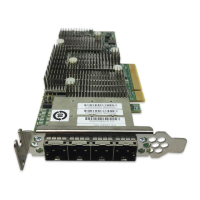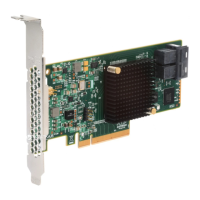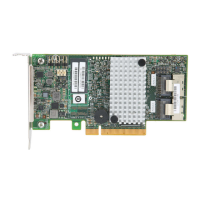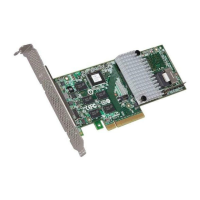LSI Corporation
- 88 -
6Gb/s MegaRAID SAS RAID Controllers User Guide
August 2012
Glossary
Glossary
B
BIOS Acronym for Basic Input/Output System. Software that provides basic read/write capability.
Usually kept as firmware (ROM-based). The system BIOS on the motherboard of a computer
boots and controls the system. The BIOS on your host adapter acts as an extension of the
system BIOS.
C
configuration Refers to the way a computer is set up, the combined hardware components (computer, monitor,
keyboard, and peripheral devices) that make up a computer system, or the software settings that
allow the hardware components to communicate with each other.
D
device driver A program that permits a microprocessor (through the operating system) to direct the operation
of a peripheral device.
domain validation A software procedure in which a host queries a device to determine its ability to communicate at
the negotiated data rate.
drive group A group of physical drives that combines the storage space on the drives into a single segment
of storage space. A hot spare drive does not actively participate in a drive group.
E
EEPROM Acronym for Electronically Erasable Programmable Read-Only Memory. It is a memory chip that
typically stores configuration information, as it provides stable storage for long periods without
electricity and can be reprogrammed. See NVRAM.
external SAS device A SAS device installed outside the computer cabinet. These devices are connected using specific
types of shielded cables.
F
Fusion-MPT architecture An acronym for Fusion-Message Passing Technology architecture. Fusion-MPT consists of several
main elements: Fusion-MPT firmware, the Fibre Channel and SCSI hardware, and the operating
system-level drivers that support these architectures. Fusion-MPT architecture offers a single
binary, operating system driver that supports both Fibre Channel and SCSI devices.
H
host The computer system in which a RAID controller is installed. It uses the RAID controller to
transfer information to and from devices attached to the SCSI bus.
host adapter board A circuit board or integrated circuit that provides a device connection to the computer system.
hot spare An idle, powered on, standby drive that is ready for immediate use in case of drive failure. A hot
spare does not contain any user data. A hot spare can be dedicated to a single redundant array
or it can be part of the global hot-spare pool for all arrays managed by the controller.
When a drive fails, the controller firmware automatically replaces and rebuilds the data from the
failed drive to the hot spare. Data can be rebuilt only from virtual drives with redundancy (RAID
levels 1, 5, 6, 10, 50, and 60; not RAID level 0), and the hot spare must have sufficient capacity.
I
internal SAS device A SAS device installed inside the computer cabinet. These devices are connected by using a
shielded cable.
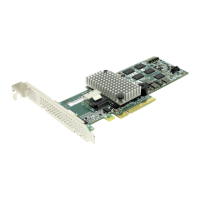
